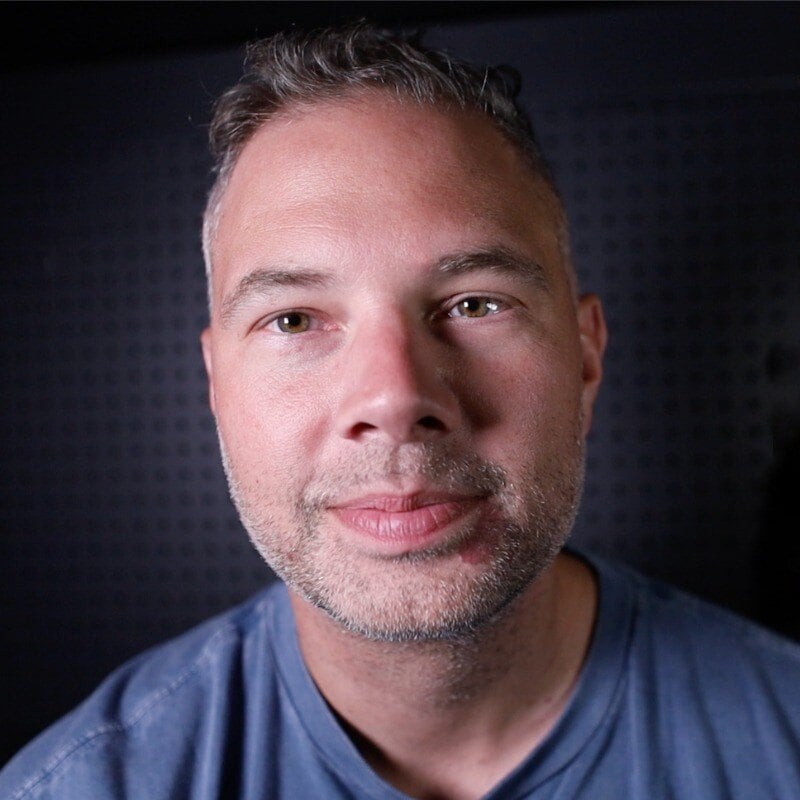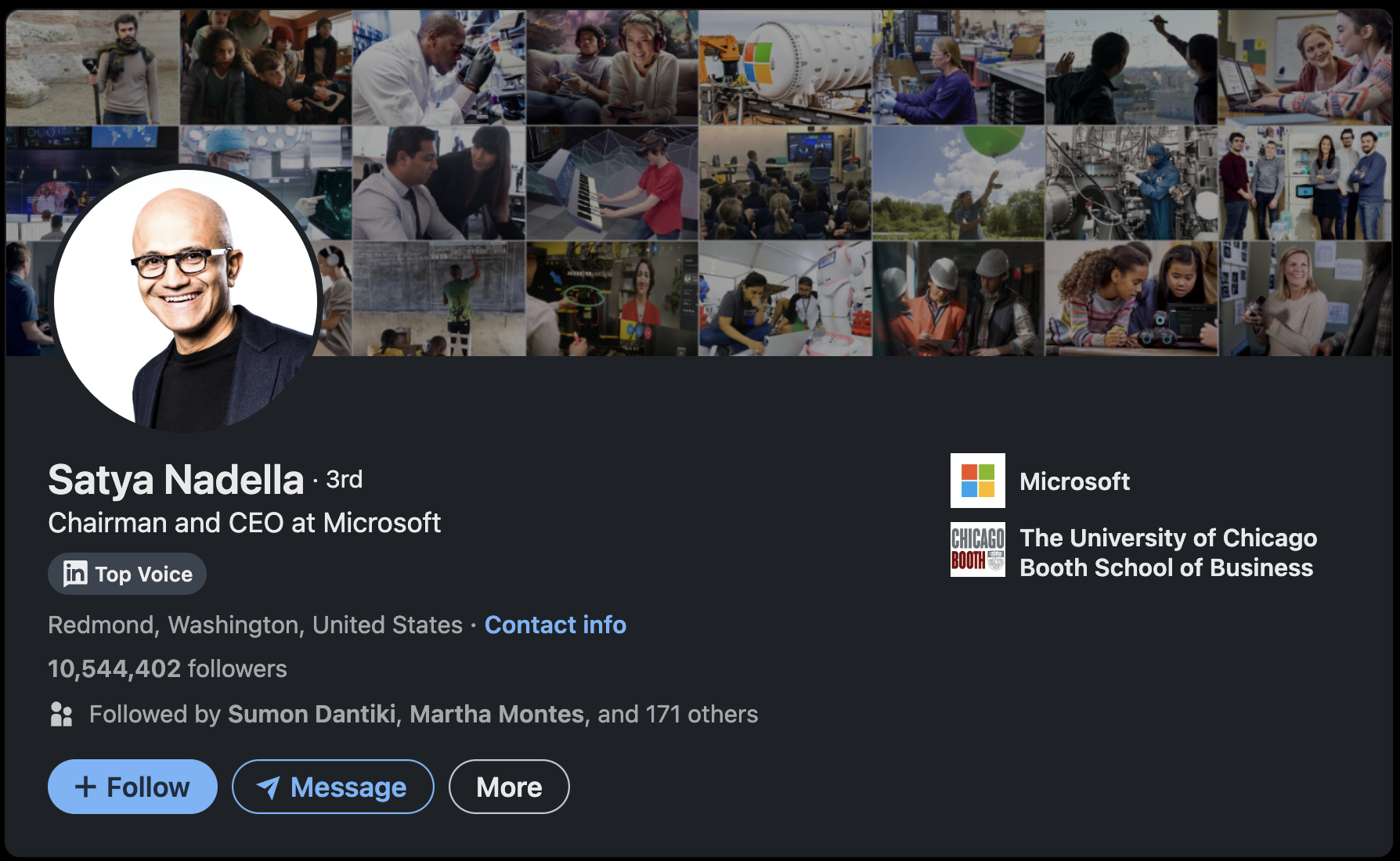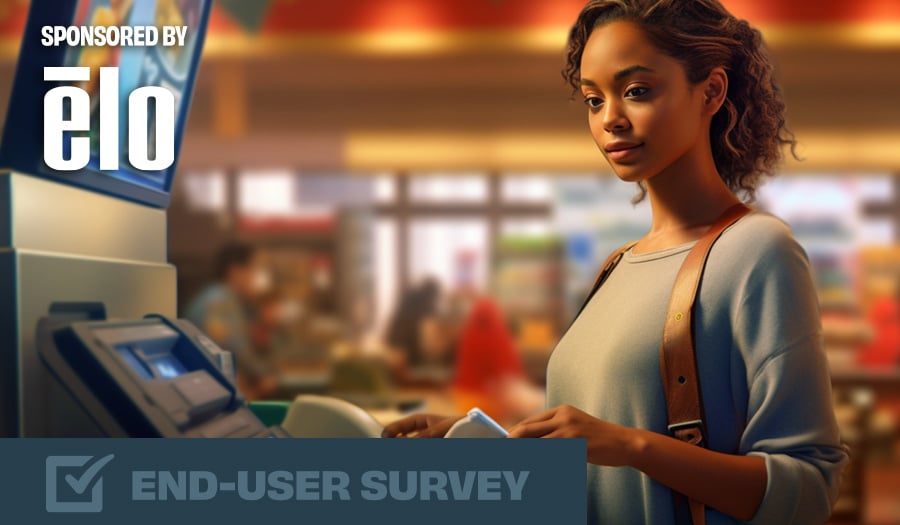Why you should spend time on LinkedIn:
- To raise awareness for your business with thought leadership and brand advocacy
- To gain customer feedback used to inform business strategy
- To earn trust and credibility with prospective customers
- To show up favorably in the eyes of employment candidates,
A Weber Shandwick study found that socially engaged CEOs are more likely to improve a company's reputation, attract talent, and increase employee advocacy.
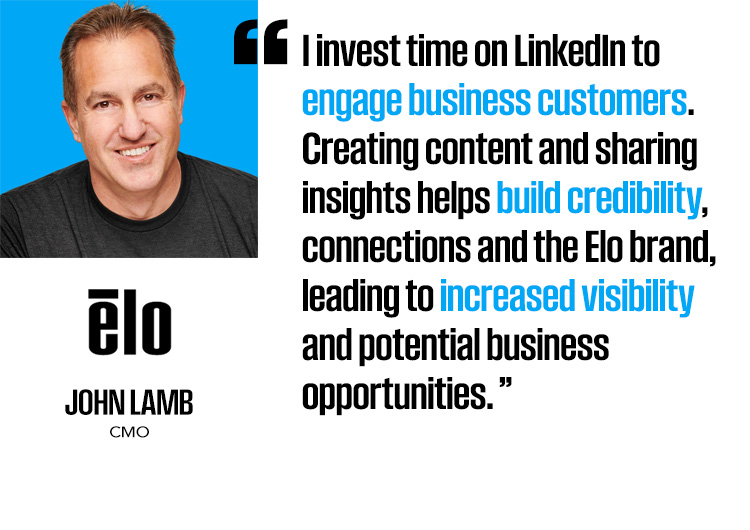
The rising importance of LinkedIn
With more than 800 million users in 2023, and 57% of them being decision-makers [LinkedIn, "About Us", 2023.], LinkedIn's value proposition for executives is impossible to ignore.
The LinkedIn network is more mature, professional, and conducive to industry-related discussions and content sharing than other platforms. Furthermore, the Content Marketing Institute statistics revealed that 94% of B2B marketers use LinkedIn as a content distribution channel, underscoring the platform's effectiveness for professional outreach.
What do we mean by content?
There's much talk about content creation, but what exactly do we mean by content?
Content can mean everything from text-only posts to podcast clips, images or photos, video case studies, an embedded PDF, link to an article, or an infographic.
Content that can be consumed fully without requiring the user to click away to another website is called native content. More recently, the term zero click content was coined to refer to text, videos, images, and other content types meant to be read or watched directly on the social platform instead of on an external website.
You may think asking a viewer to click away from LinkedIn to your website or YouTube channel isn't a big deal. Still, it turns out that native video content inside the LinkedIn feed receives 5x more engagement than externally linked videos that require viewers to click off-platform to watch.
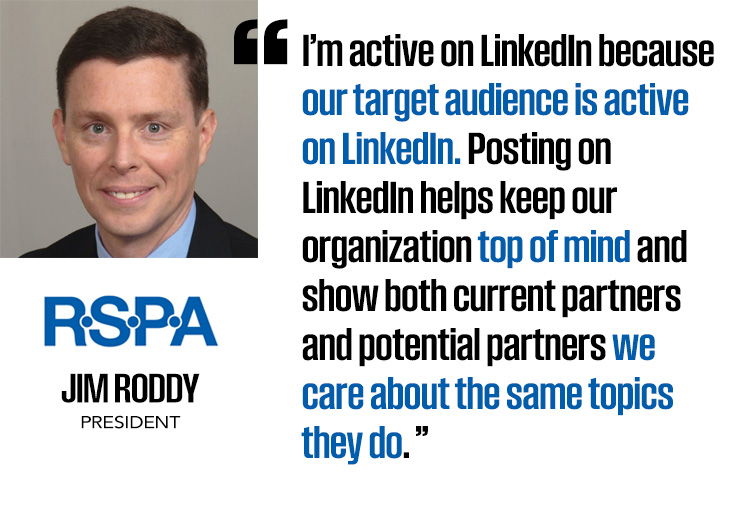
The influencer effect—personal vs. corporate profiles
Traditionally, many CEOs may have preferred to stay behind the scenes, letting their companies' branding efforts speak for them. However, data indicates a transformative shift in this outlook. According to a survey by Brunswick Group, 63% of employees say they would prefer to work for a company where the CEO uses digital and social media. Moreover, CEOs who use social media are perceived to be 89% more empowering, and companies with socially active CEOs are 77% more likely to attract and retain talent according to a report by Weber Shandwick.
Additionally, a study by Refine Labs show that posts made from personal profiles get 2.75x more impressions and 5x more engagement than those made from company profiles. People want to connect with people, so building and leveraging personal brands is about effectiveness, not vanity.
Great Examples of Social Executives
Satya Nadella - CEO, Microsoft
Nadella is an excellent example of a CEO who leverages LinkedIn to its fullest. He regularly shares updates about Microsoft's latest innovations, initiatives, and partnerships. Additionally, Nadella uses the platform to share his insights and thoughts on various topics, such as technology trends, leadership, diversity, and inclusion. This strategic use of LinkedIn cements his reputation as a thought leader and keeps Microsoft at the forefront of relevant discussions, ultimately boosting the company's image and brand value.
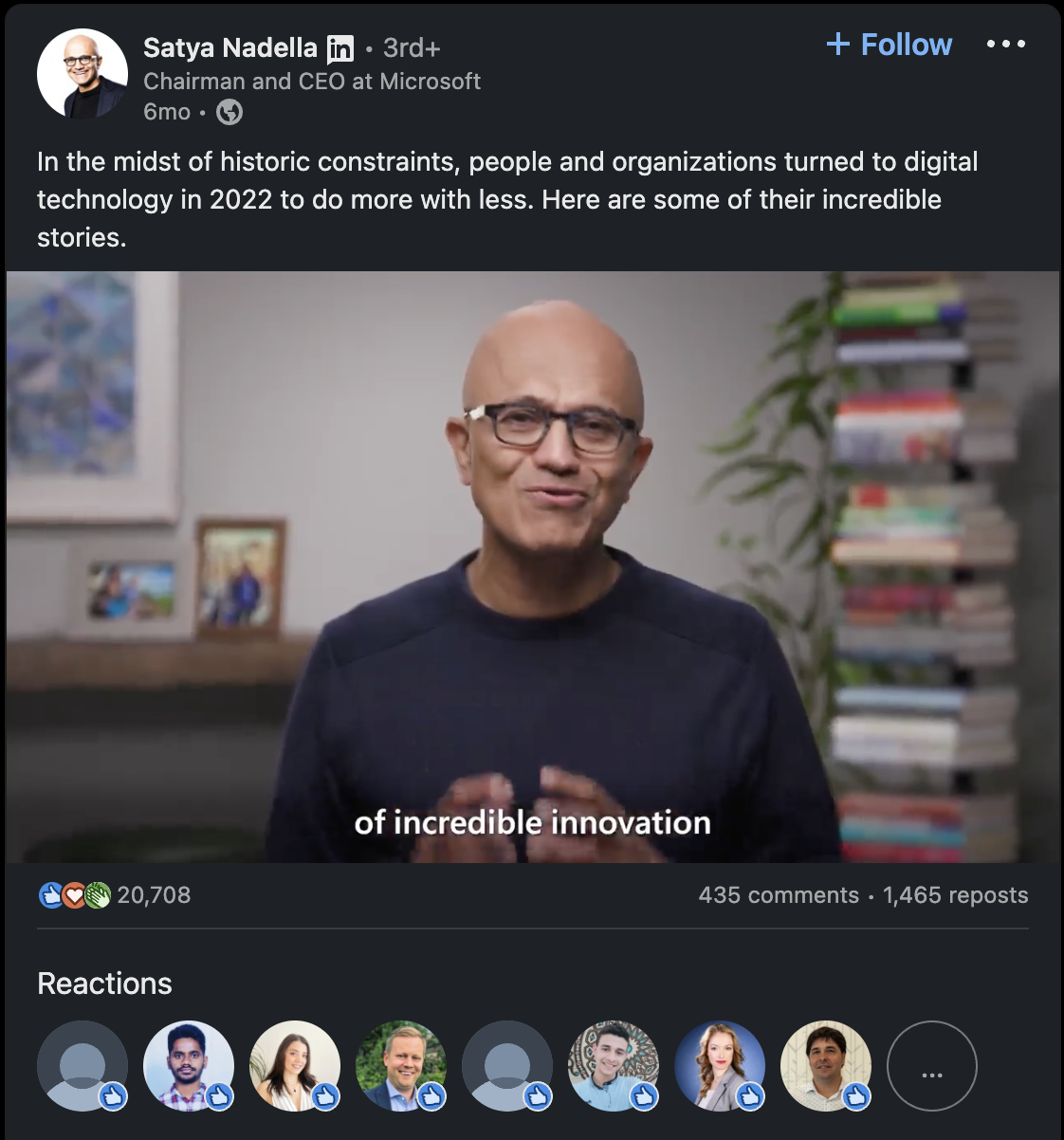 view post >>
view post >>Dhasmesh Shah - CTO and Founder, Hubspot
Shah is the CTO and co-founder of SaaS juggernaut Hubspot, who has successfully moved from the SMB market into the enterprise competing with the likes of Salesforce for marketing automation buyers. What's incredible is that Dharmesh's personal following—1.06M on LinkedIn—has eclipsed Hubspot's company profile following of 954k. His content is a mix of product updates, event promotion, thought leadership, and musings about leadership and creativity.
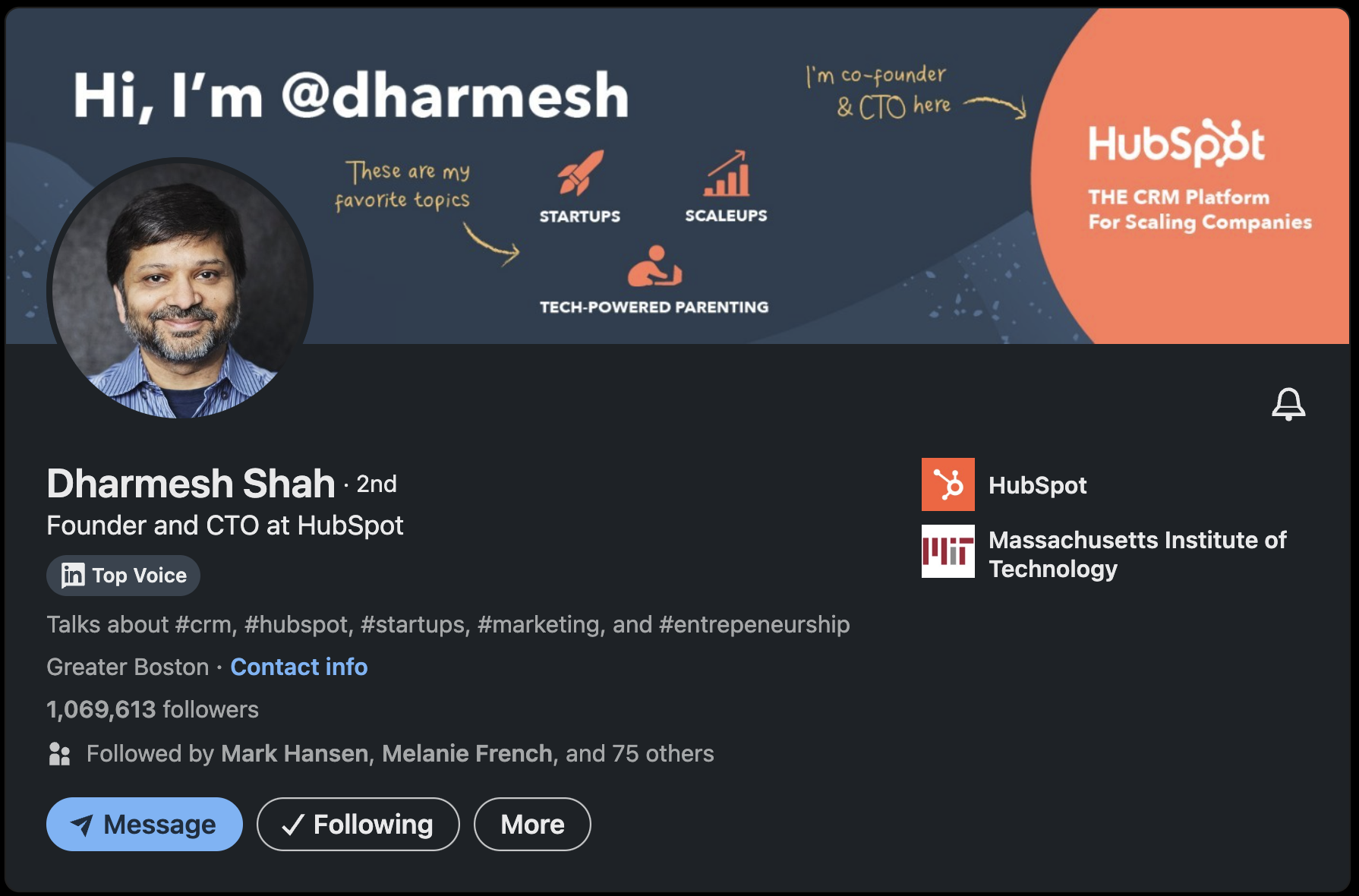
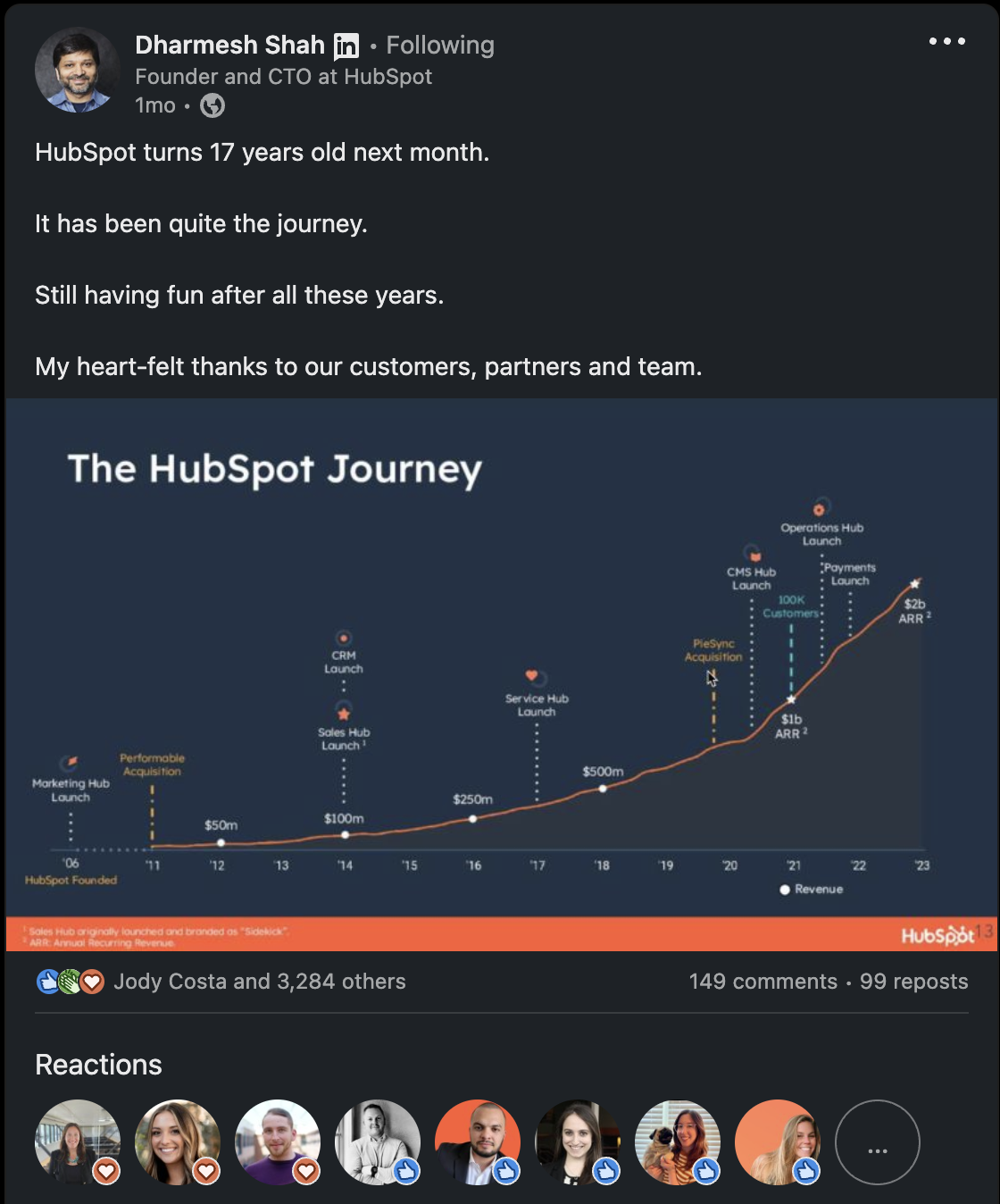 view post >>
view post >>
Mary Barra - CEO, General Motors
Barra has been effectively utilizing LinkedIn to communicate her company's vision and commitment to an all-electric future. She shares company achievements, industry trends, and her views on leadership and innovation. By doing so, she humanizes the brand, generates meaningful discussions, and fosters a stronger connection with her audience - employees, consumers, and potential investors.
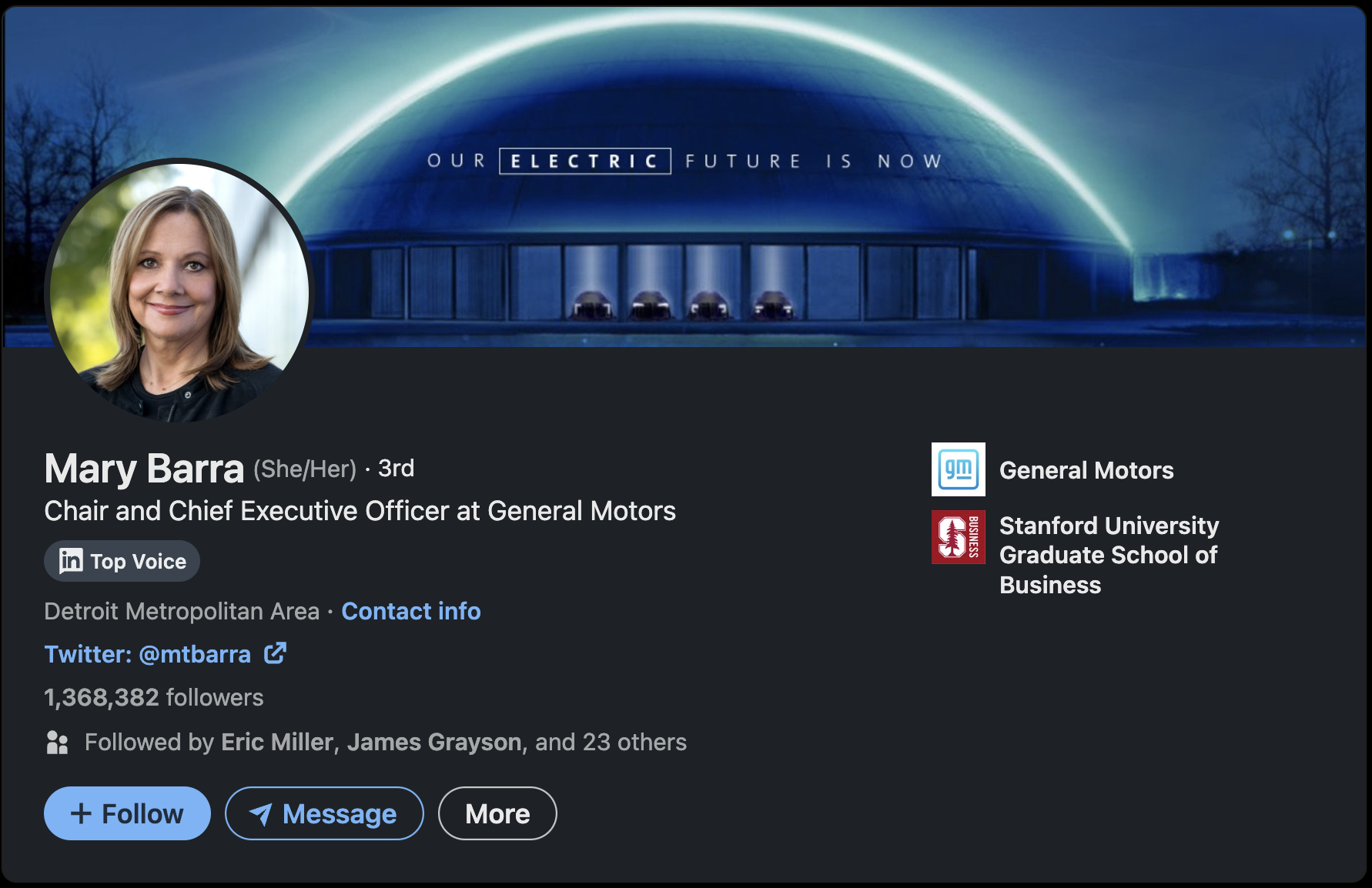
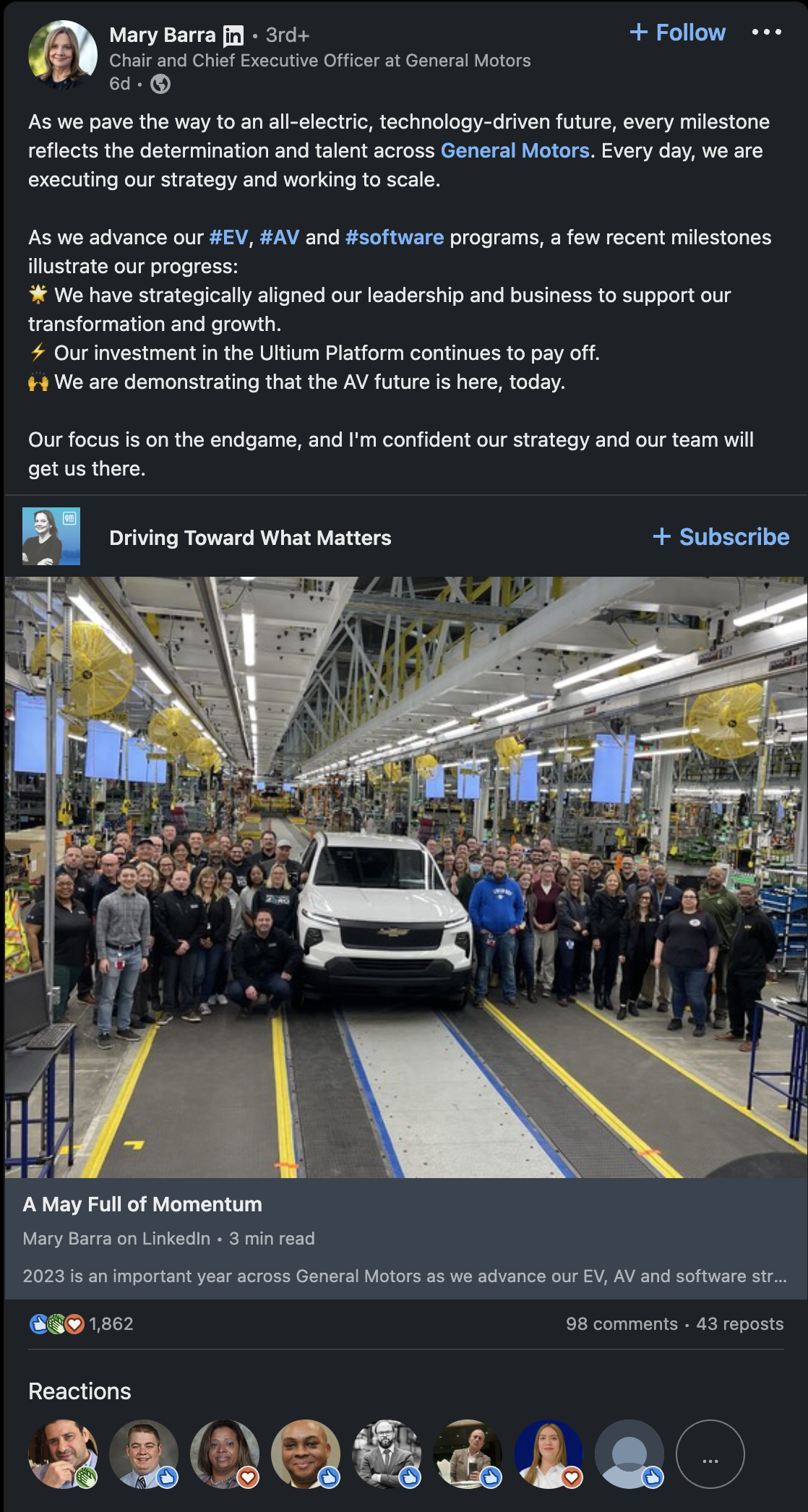 view post >>
view post >>
The Executive Playbook
Step 1 - Build the network
You likely have a LinkedIn account—and if that's as much as you can say about your presence on the platform, you're not alone. Before sharing content can become a meaningful investment of your time, you need to build a network of relevant connections. This is a step that you have the option of delegating.
Define your ideal audience—possibly a mix of employees, current customers, prospects and peers—then empower a staff member to begin making connections on your behalf. You'll need to give them your login credentials so make sure they're someone you can trust with that level of access.
LinkedIn allows an individual profile to connect with between 80 and 100 people per week. Within months, you'll have a couple of thousand relevant connections with whom your content should resonate.
Step 2 - Develop the strategy
To keep things simple, think about strategy like this:
- What are my goals for sharing and engaging on this platform?
- What does my audience care about?
- What access do I have to proprietary (but not secret) data?
- What unique point of view, expertise, and experience do I have to share?
Let your answers to these questions guide what you create, combining your audience's interests (and problems) with the expertise and hard-to-replicate data you can share.
Systematize your content creation in a way that is repeatable but not boring and capable of being created and shared regularly. Record in person meetings, conversations, and events to create content that can be scaled to larger audiences online.
Consider how you might take a long form piece—such as a podcast episode—and break it down into several smaller clips, quotes, and inspiration for text posts that further explore lightly touched topics.
Develop content pillars or themes that you'll share about. For Dharmesh Shah at Hubspot, these are:- Leadership and company culture tips
- Hubspot product announcements
- Personal and brand storytelling
Step 3 - Execute
The more you can be personally involved in this step, the better. In today's business social environment, posts made by executive and senior staff members will often reach more people and receive more engagement in terms of likes, comments, and share than content posted by the official company account.
You'll likely need the support of your team to create graphics, record and edit video, or get you up to speed on the finer points of crafting messages that perform well on social, but the more your personality and unique point of view shine through, the better.
Step 4 - Engage with Others
A lesser-known but highly effective strategy to gain visibility for yourself and your business is to engage with posts from others.
Your comments on posts published by your network will show up in the feeds of your connections and will be seen by people viewing the original post.
Adding thoughtful reactions to other people's content can be a major driver of the growth of your profile,—and remember—that's a good thing, because individuals are the breadcrumbs to the company profiles. Furthermore, being aware of the conversations happening in your network—especially those starting compelling conversations—will help you generate ideas for future content pieces.
